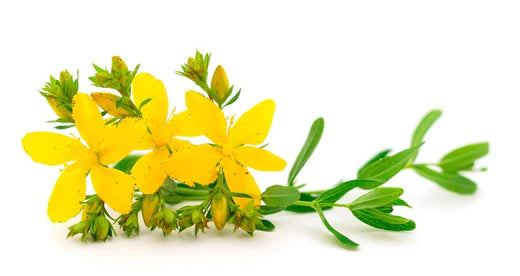Ayurveda is the study of holistic science that improves our way of life by enhancing our diet and living standards, both of which can have a positive or negative impact on our way of life and result in either a happy or unhappy existence. According to Ayurveda, health is the balance of the three energies known as potential, kinetic, and thermal energy. Weakness and a variety of medical conditions are caused by their irregularity. This balance can be thrown off by an irregular lifestyle, physical and emotional stress from a variety of sources, improper dietary intake, which includes consuming incongruous food types, and many other things. Ayurvedic herbal remedies offer us treatments for illnesses that are closely related to nature and have no negative side effects. Herbs and medicinal plants that grow abundantly all around us are the foundation of Ayurveda. In this article, we'll talk about the Chakshushya plant, which Nighantus describes as the greatest herb. Chakshushya is used to treat numerous skin conditions as well as eye conditions. This plant supports calming, diuretic, and tikta rasa effects. Additionally helping the liver and kidneys stay healthy is chakshushya.
General Information
With the common name of Jasmeejaz or Chaksu seeds in English and Chakur/Chimed in Hindi, Chakshushya is known as the botanical name of Cassia absus and is a member of the Caesalpiniaceae family. It is used in India. Chakshushya is a sticky plant that grows in India, particularly in North-West India at the base of the Himalayas. Its name means "eyes," indicating the importance of this herb even from only its name. Its leaves and seeds are both edible. The liver and kidneys' health is supported by chakshushya. The plant contains a variety of qualities, making it useful in the Indian system of medicine. This herb is known as Chakanu in Hindi, Chanubala vittulu in Telugu, Karum in Tamil, and Chakshu in Unani.
Special Note About Cassia Absus
- According to Dhanvantari Nighantu, this plant belongs to the Chandanadi Varga group.
- According to Raj Nighantu, this plant falls into the Parpatadi Varga group.
- Its roots include Chaksine or isochaksine, while its leaves contain a substance called Quercetin or rutin.
- Beta-sitosterol, apigenin, hydnocarpine, and many more compounds can be found in its seed.
- This herb is a self-proven effective anti-inflammatory herb with anti-bacterial and anti-microbial effects because of these chemical compositions.
Systemic Classification
- Botanical Name - Cassia absus
- Family - Caesalpiniaceae
- Genus - Cassia
- Species - C. absus
Synonyms
This plant is well-known by a number of names:-
- Chakshushya (good for eyes).
- Arnnyakulthika (like the forest-found kulathi plant.).
Habitat
- This herb grows as an upright, transient perennial 1–1.2 cm tall.
- This unctuous plant has a limited lifespan, usually only lasting a year. Its leaves are grouped together and have long, curving sides from the top. A bitter and astringent-tasting mixture of Tikta and Kashaya rasa is found in one groove between two leaves.
- Its tiny, scarlet blossoms have a yellowish tinge and measure between one and two inches in length.
- Its fruit is made up of seeds and measures between one and one and a half inches long and is flat with a hairy surface. It is a dark black color, while the pulp is a light color.
- From the western slopes of Himalaya Pradesh to Sri Lanka, this herb is primarily found.
Ayurvedic Properties
|
|
Hindi / Sanskrit |
English |
|
Rasa (Taste) |
Kashaya, Tikta |
Astringent, Bitter |
|
Guna (Qualities) |
Ruksha |
Dry |
|
Virya (Potency) |
Sheeta |
Cold |
|
Vipaka (Post-Digestive Taste) |
Katu |
Pungent |
Effects On Doshas
It balances the Kapha and Pitta doshas, which aids in calming diseases linked to Kapha and Pitta. Tikta, Kashaya rasa, is the gunna in charge of this tactic.
Practical Uses
- Its external application is beneficial for preserving the health of the eyes because it has scraping and anti-inflammatory actions.
- Due to its kashaya rasa, this is an excellent absorbent with good clotting ability and can be taken for bleeding disorders.
- This has a diuretic effect.
- The herb chakshushya supports healthy digestive processes and can be used to treat diarrhea, blood stools, and irritable bowel syndrome.
- It supports healthy kidney and liver functions. It's one of the best Ayurveda kidney herbs for holistic wellness.
- Its seeds aid in reducing inflammation and bladder blockage to encourage urine flow.
- Due to its kapha hara guna, this is used to treat a variety of respiratory conditions, including rhinitis, asthma, sinusitis, and COPD.
- Furthermore, it can aid in treating cases of sthavar and jangama visa-related toxicity.
- The seed powder is used to keep levels stable in hypertension.
Part used
Seeds are used
Dosage
One to three grams of the seed powder can be consumed.

